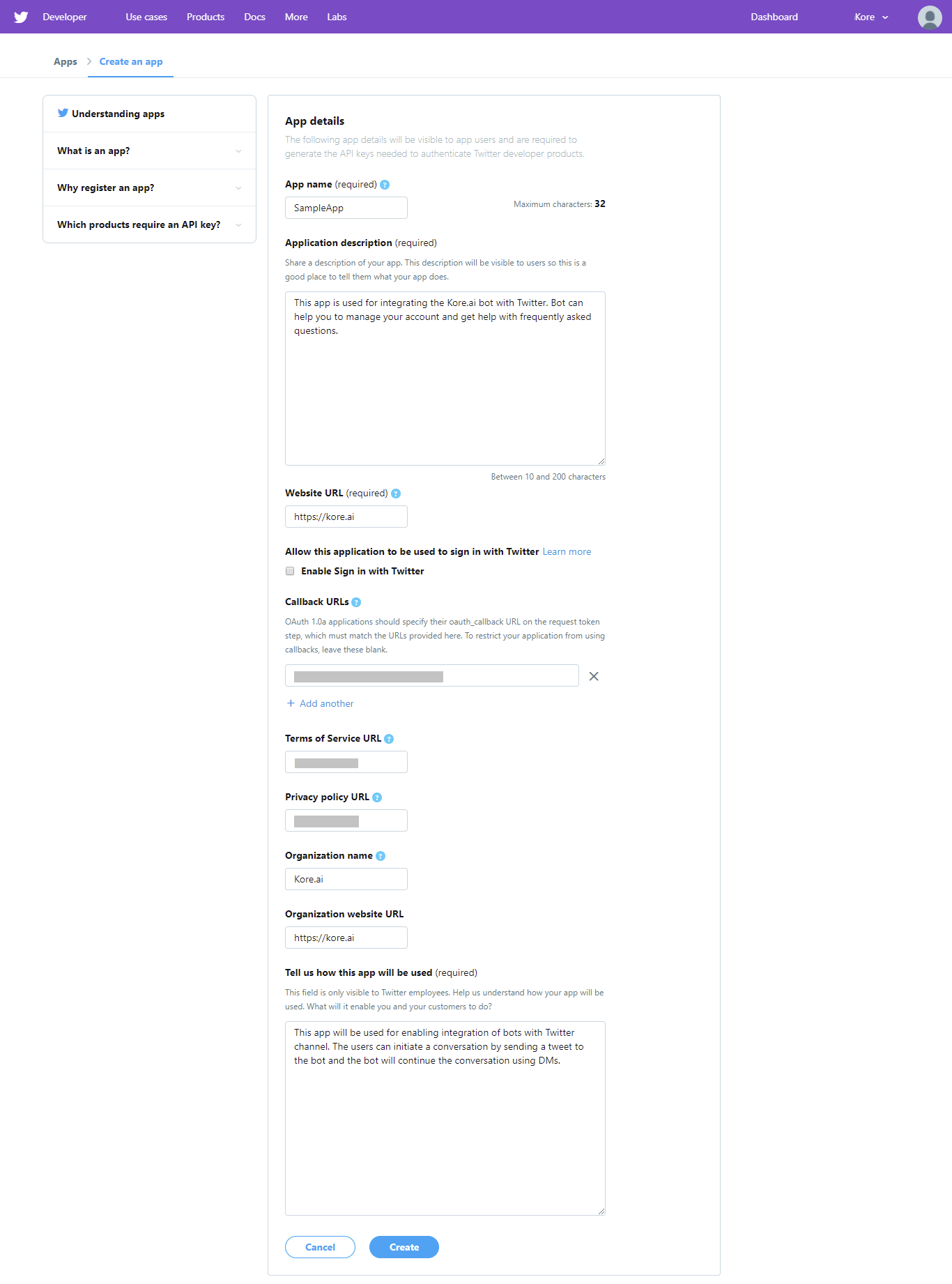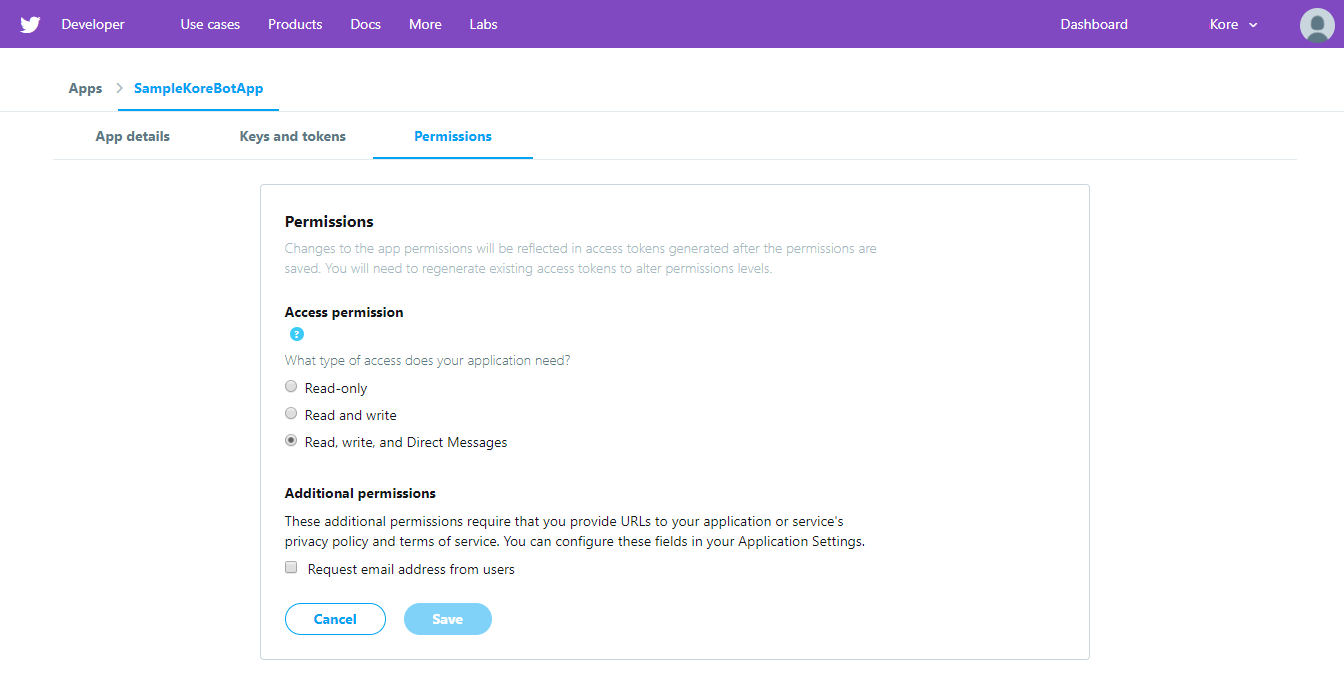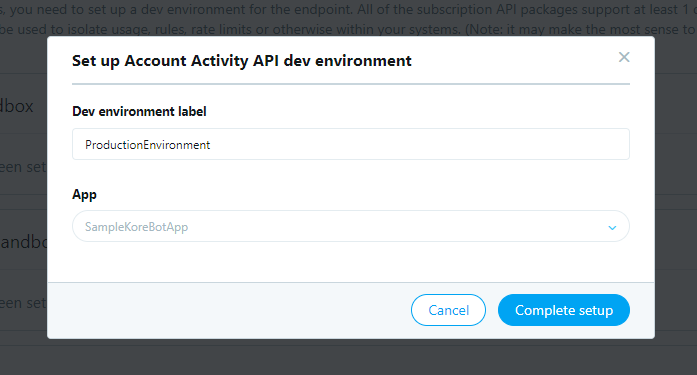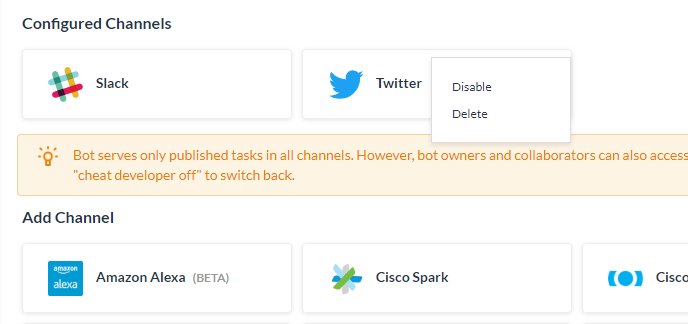To set up Twitter as a channel, you need to associate the bot with a Twitter account, define a Twitter app and enable the integration. To add Twitter as a channel, you need to:
- Create Twitter App– Log on to Twitter and in Twitter App Management Console create an app to provide authorization for communication between Twitter and your Kore.ai Bot.
- Setup Keys and Tokens- Generate the authentication keys and tokens for the Twitter app to communicate with the Kore.ai Bots Platform, and then copy those keys and tokens to Kore.ai Bot Builder.
- Update Permissions -To use Twitter as a channel for your Kore.ai Bot, you must define the Twitter app permissions used to interact with the Kore.ai Bots Platform.
- Enable Channel- After setting up the Twitter app and entering configuration data in Bot Builder, you need to enable the channel.
To add Twitter channel:
To complete this procedure, you must create a Twitter account if you do not have one already.
NOTE: The steps have been modified in ver7.1 of the platform in sync with changes to the channel requirements.
Create App
- To create a Twitter App, you need a Callback URL, for that
- In the Bots section of the Bot Builder, click the Bot that you want to add the Twitter channel to.
- On the Channels tab, click the Twitter icon. The Twitter Channel page gets displayed.
- Use the Callback URL from the Configurations tab of Twitter channel page.
- Login to Twitter apps portal and select Create New App.
- Provide all the required information, and click on Create your Twitter application to create your new app.

Keys & Tokens
After the application is created:
- Proceed to the Keys and tokens tab.
- Under the Access token & access token secret section click the Create button. This action will generate the Access Token and Access Token Secret.

- Copy the values of API Key, API Secret Key, Access Token and Access Token Secret fields. You will need to provide them while configuring the Twitter channel from the Bot Builder for the respective Bot.
Permissions
- Navigate to Permissions tab and click the Edit and set the Access Permission to Read, Write and Direct Messages. Click Save.

- Navigate to the Dev environments page and set up the environment for your app. Click Set up dev environment button under the Account Activity API section. Provide a value for Dev environment label, say ProductionEnvironment, choose your app and Complete Setup.
Please make sure that your Kore.ai bot is linked with only one Dev Environment on Twitter.

Copy the Environment label and App Owner name without the ‘@’ symbol. You will need to provide them while configuring the Twitter channel from the Bot Builder for the respective Bot.
Enable Channel
- In the Bots section of the Bot Builder, click the Bot that you want to add the Twitter channel to.
- On the Channels tab, click the Twitter icon. The Twitter Channel page gets displayed.
- Navigate to Conigurations tab.
- Enter the API key, API Secret Key, Access Token and Access Token Secret obtained from the Keys and Tokens tab of your Twitter app.
- Enter the Dev Environment Label and App Owner as set up in the Permissions section of the Twitter app.
- Click the Authorize button to register a webhook with your Twitter app and to subscribe to realtime activities.
- Enable Channel and Save.
- Your Twitter channel is setup and ready for Publishing your Bot.
Editing the Twitter Channel
To edit the Twitter channel, hover your mouse over the channel and click to modify. You can make necessary updates to your channel configurations and save them. You may also disable or delete the channel information by clicking the Settings icon

Select one of the following commands to modify the channel:
- Disable/Enable – Click Disable to temporarily disable use of the Twitter channel for your Bot. To enable use of the Twitter, click Enable.
- Delete – Click Delete, and then click OK in the Delete Confirmation dialog to permanently delete the Bot channel configuration.
